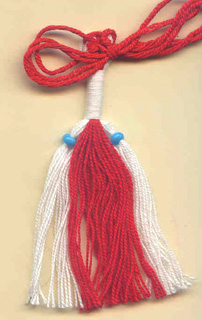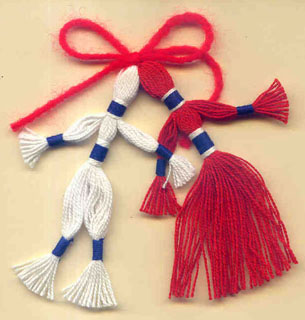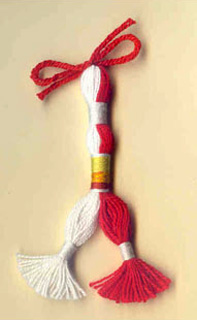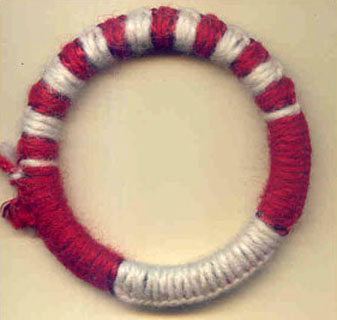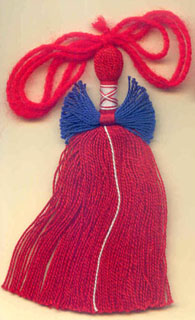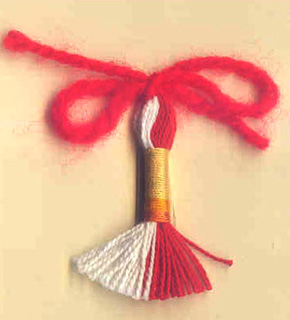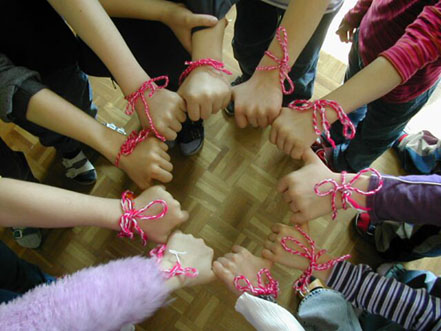Bulgarian traditions of 1 March
Ethnographers and researchers presume that the martenitsa is brought in by proto-Bulgarians at the end of VII century. Even then our forefathers used to attach to their battle standard of spear and horse's tail a twisted and blood-colored wool. The tradition of wearing such an amulet was present for over 13 centuries. Of course, until our days the "martenka" has changed quite a bit. Today there's a great diversity of models and variations. In every region where Bulgarian communities live martenitsas are made. They've got a specific outlook in separate regions. The authentic amulet is made of natural materials. Typical is the using of both white and red woolen yarn, but there are also villages where they substitute the white with blue yarn - against evil forces. The red thread is always present however (giving health, fertility and fruitfulness). A single-colored martenitsa of red wool is made in some villages in Northern Bulgaria. The handcrafting of the amulet in some particular regions is bound to certain rituals. For Bulgarians from the village of Yasaug the martenitsas are made "by a hungry-hearted" and in Nova Nadejda they're "twisted by a man who hasn't kindled a fire". In Ochrid (Macedonia) they're made while keeping the eyes closed and wool collected from stubble-fields and briers. The thread of the martenitsa is always twisted, because "a not-twisted thread is not a martenitsa" and the twisting is done always leftward.
The composition of the amulet also includes additional elements such as: coins, iron rings, metal scraps, dogwood branches, wooden balls, cloves of dry garlic, beads, etc. The combination of the threads with these elements is a quest for coherence between the design and the purpose of the martenitsa as a "textbook". Therefore, they are primarily intended for humans and domestic animals. Martenitsi are also tied on fruit trees, vines, barns, outbuildings, implements of work, in homes, under the eaves and others. Wearing this amulet is for a certain period - until March 9, until March 25/Blagovets/ or until the first sighting of a stork, swallow or cuckoo, as well as a blossoming fruit tree. Then they are most often placed under a stone or tied to a green fruit tree, and in rare cases they are thrown against the sun, along the course of the river or burned.
***
We offer several models according to our ideas and style, made for the martenitsi bazaars. Atelier Dinel made it a tradition to hold these exhibitions every winter at the end of February until 2004. You can view each model separately. You can see more martenits by Atelier "Ludinel" on the "Other design" page. If you wish to order or show interest in our other models, write to our



